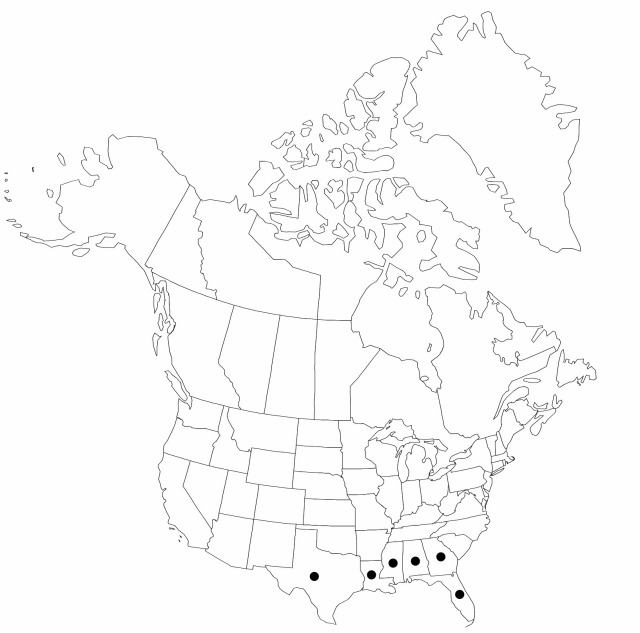Difference between revisions of "Fuirena longa"
Fl. South U.S. ed. 3, 541. 1897.
FNA>Volume Importer |
FNA>Volume Importer |
(No difference)
| |
Revision as of 21:08, 16 December 2019
Herbs perennial, rhizomatous, 20–60 cm, nearly glabrous; rhizomes much branched. Culms tufted or regularly spaced along rhizome, slender, wandlike, frequently hispidulous distally. Leaves: principal blades at mid and distal culm, short-linear, 1.5–5 cm, puberulent distally. Inflorescences terminal, of 1–2 clusters; spikelets 1 or 2–5 per cluster, subtending involucral bract longer than spikelets. Spikelets cylindric-lanceoloid or lance-ovoid, 10 mm, apex acute; fertile scales mostly obovate, 2.5–3.5 mm; mucro erect, 1/2 or more length of scale; median ribs 5–7, 3 convergent to mucro. Flowers: perianth bristles reaching base of perianth blades, retrorsely scabrid; perianth blades oblong-obovate, as long as claws, base flattened, 3-ribbed, apex thickened, narrowly acuminate, sharp; anthers mostly 3, 1.3–1.5 mm. Achenes: body angles pale, wirelike, faces lustrous red-brown or chestnut brown, 1 mm; beak narrow, linear, hispidulous at tip. 2n = 46.
Phenology: Fruiting summer–fall.
Habitat: Brackish and freshwater marsh edges, flatwoods seeps, ditches, moist savanna
Elevation: 0–100 m
Distribution

Ala., Fla., Ga., La., Miss., Tex.
Discussion
Fuirena longa is ostensibly a stable hybrid between F. breviseta and F. scirpoidea.
Selected References
None.
